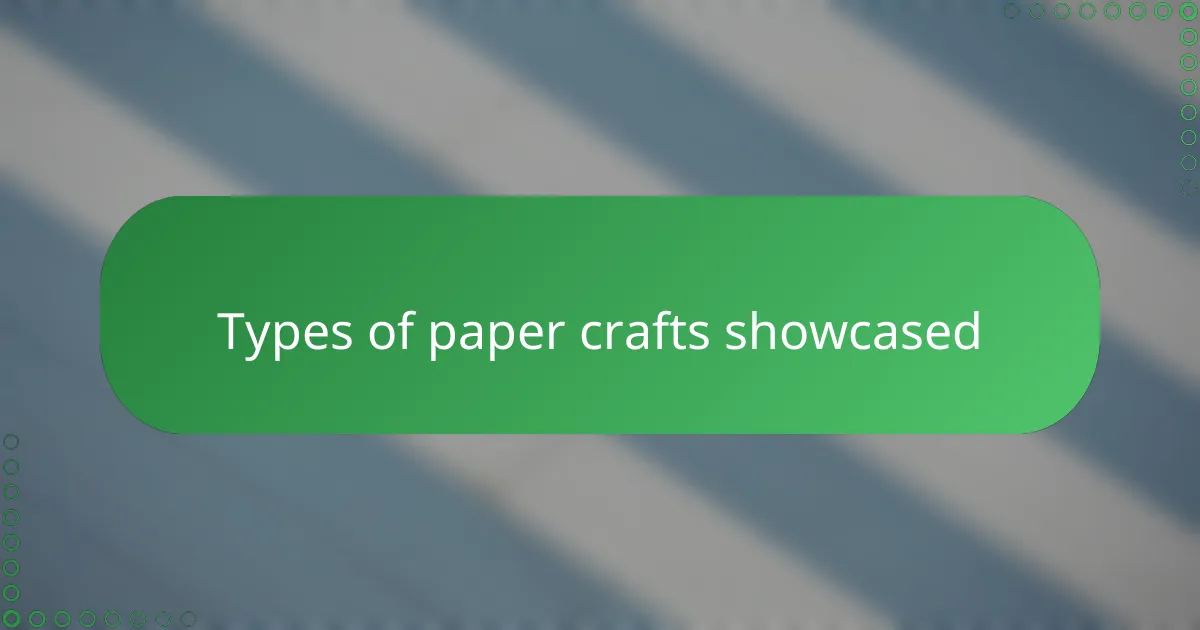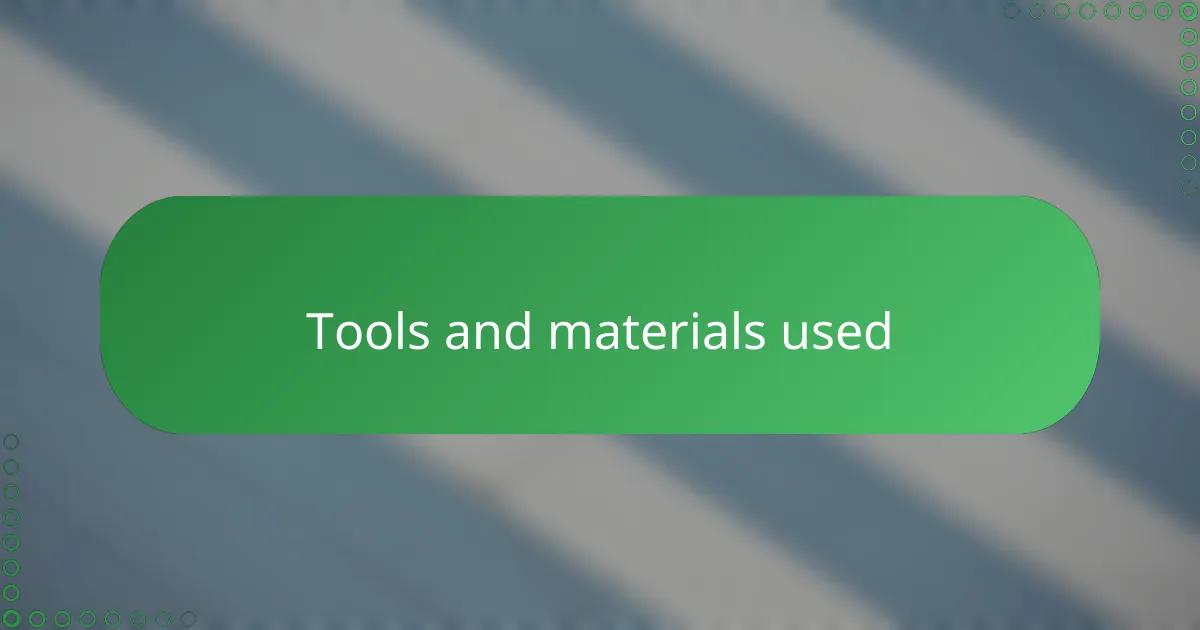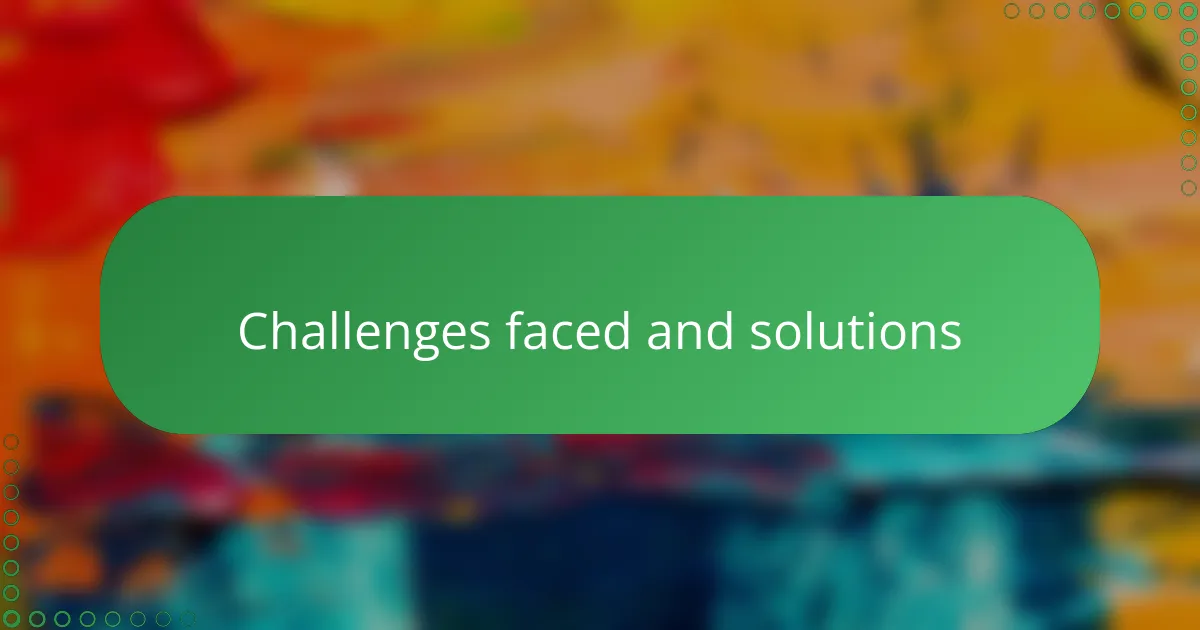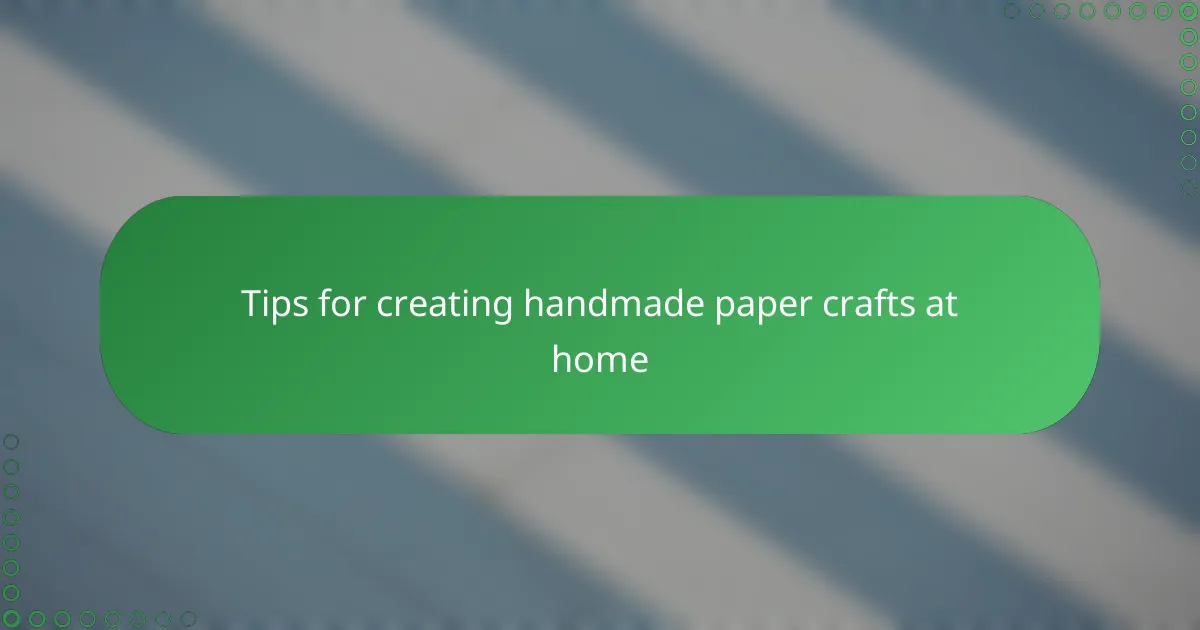Key takeaways
- Handmade paper crafts offer a unique, personal experience that blends tradition and modern creativity, making each piece a reflection of the maker’s journey.
- Craft Boston showcased a diverse array of techniques and materials, inspiring creators to explore functional art and embrace the creative potential of handmade paper.
- Learning techniques like pulp painting and unique bookbinding styles enhances appreciation for the craft, emphasizing the importance of texture and patience in the process.
- Effective workspace organization and experimenting with household items as tools can significantly improve the crafting experience, fostering creativity and connection to the craft.

Introduction to handmade paper crafts
Handmade paper crafts have always fascinated me because they blend creativity with a tactile experience that feels genuinely rewarding. Have you ever held a piece of paper that’s been carefully formed by hand and noticed how it carries a unique texture and warmth? That subtle difference makes each craft feel like a personal story rather than just a product.
From my experience, working with handmade paper invites a slower, more thoughtful approach that encourages patience. It’s not just about the final piece but the process—the way fibers come together, creating something beautiful and entirely unique. This hands-on aspect turns crafting into a meditative, almost therapeutic practice.
What I love most is how handmade paper crafts connect me to tradition while allowing space for modern creativity. Each sheet tells a history of skilled artisanship, yet also opens endless possibilities for customization. It’s this balance that keeps me coming back, eager to explore new techniques and textures.

Overview of Craft Boston event
Craft Boston is one of those events that instantly feels like a creative haven. When I walked through the doors, I was surrounded by a vibrant mix of artists showcasing everything from delicate ceramics to intricate paper crafts. Have you ever been somewhere and immediately sensed the energy of craftsmanship? That’s exactly what this event radiates.
What struck me most was the dedication each artisan brought to their work. It wasn’t just about selling products; it felt like sharing a piece of their soul. The diversity of techniques and materials on display left me inspired and curious, especially seeing how handmade paper fit into this tapestry of creativity.
Being at Craft Boston reminded me why community matters so much in handmade crafts. There’s something special about seeing artists and enthusiasts come together, exchanging stories and ideas. It made me appreciate my own craft more, knowing I’m part of a larger, passionate movement.

Types of paper crafts showcased
Walking into the paper crafts section at Craft Boston, I was amazed by the sheer variety on display. From delicate origami that seemed too intricate for fragile paper to bold, textured collages layered with handcrafted sheets, each piece told a different story. Have you ever noticed how some paper crafts invite you to pause and really examine the details? That’s exactly what happened to me—I found myself lingering, captivated by the craftsmanship.
One thing that stood out was the range of techniques beyond the usual folding and cutting. There were artists who worked with pulp painting—where colored paper pulp is manipulated like paint—and others who created stunning handmade journals with textured covers and unique bindings. It reminded me how versatile handmade paper can be and how endless the creative possibilities really are.
I also loved seeing functional art alongside pure decoration, like handmade paper lampshades that glowed warmly, transforming simple materials into something magical. It made me reflect on my own projects and how much potential there is to experiment with both form and function in paper crafts. Isn’t that the beauty of handmade work? It invites you to rethink what everyday materials can become.

Tools and materials used
One of the first things I noticed at Craft Boston was the variety of tools artists used to transform simple fibers into intricate paper creations. There were traditional deckle frames for forming sheets, alongside unexpected items like wooden spoons and fine mesh screens that helped shape texture. It made me wonder—how often do we overlook ordinary objects as indispensable craft tools?
The materials themselves were just as captivating. I saw cotton and linen rags, flax fibers, and even plant-based pulp that brought different textures and strengths to the paper. Handling these gave me a renewed appreciation for sourcing quality fibers; it’s not just about what looks good but what feels right in your hands during the making process. Have you ever realized how important that tactile relationship is to your creative flow?
In addition, I noticed how natural dyes and pigments played a subtle but powerful role in enhancing each piece’s character. Watching an artisan blend colors directly into wet pulp reminded me of painting with paper itself. That moment stuck with me—it’s a reminder that handmade paper crafting is not just a skill but an intimate dance between material and maker.

Techniques learned during the event
One technique I eagerly picked up at Craft Boston was pulp painting. Watching artists treat colored pulp like paint was nothing short of mesmerizing. It made me wonder—why hadn’t I experimented more with layering colors directly into the paper itself before? Trying it myself, I felt a thrilling sense of freedom, as if the paper was not just a surface but a canvas coming alive beneath my fingers.
Another exciting method I dabbled in was unique bookbinding styles using handmade paper covers. Seeing how different textures could be combined to create both sturdy and beautiful journals inspired me to rethink my usual approach. I remember fumbling a bit with the stitching at first, but that hands-on challenge deepened my appreciation for the precision and patience these artisans bring to their craft.
I also learned how subtle variations in pulp consistency and pressing techniques drastically affect the final texture and strength of the paper. It was incredible to witness how a slight change in water-to-fiber ratio could transform a sheet from fragile to surprisingly durable. This insight has made me much more conscious during my own papermaking sessions, prompting me to experiment more boldly with the basics before moving on to embellishments.

Challenges faced and solutions
One challenge I faced at Craft Boston was mastering the delicate balance between pulp consistency and wetness. Have you ever tried adjusting the water-to-fiber ratio only to end up with paper that tears too easily? I struggled with this at first, but watching experienced artisans and experimenting hands-on helped me find that sweet spot where the paper felt both sturdy and soft.
Another hurdle was working with unfamiliar tools like deckle frames and fine mesh screens. Initially, I wrestled with controlling the pulp evenly, which was frustrating. However, once I slowed down and treated each step as a mindful practice rather than a race, the process became smoother, and I started to appreciate the subtle textures that these tools could create.
Dealing with time constraints during the event also tested my patience. Crafting handmade paper is inherently slow, yet the event’s busy pace pushed me to think creatively about efficient drying and layering techniques. I found that preparing materials in advance and focusing on small sections at a time made the work manageable, transforming what felt like a pressure into a lesson in mindful pacing.

Tips for creating handmade paper crafts at home
When I first started making handmade paper crafts at home, I quickly realized that keeping my workspace organized was a game-changer. Have you ever felt overwhelmed by scattered pulp and wet sheets? By setting up designated areas for soaking fibers, forming sheets, and drying, I found I could focus more on the creative flow instead of constantly tidying up. It made the whole process feel more enjoyable and less chaotic.
Another tip that really helped me was embracing patience, especially during drying times. Early on, I was tempted to rush—peeling sheets off too soon or speeding through layering—but that often led to tears or uneven textures. I learned to see drying as part of the crafting rhythm, almost like letting the paper tell me when it was ready. Have you noticed how this slower pace deepens your connection to the craft?
Finally, I can’t overstate the value of experimenting with simple household materials as tools. I once used a fine mesh screen borrowed from the kitchen instead of a traditional deckle frame, and surprisingly, it created a beautiful texture I hadn’t expected. Isn’t it exciting to discover how everyday objects can unlock new possibilities in handmade paper crafts? That sense of discovery keeps me inspired to try new approaches every time I sit down to create.
